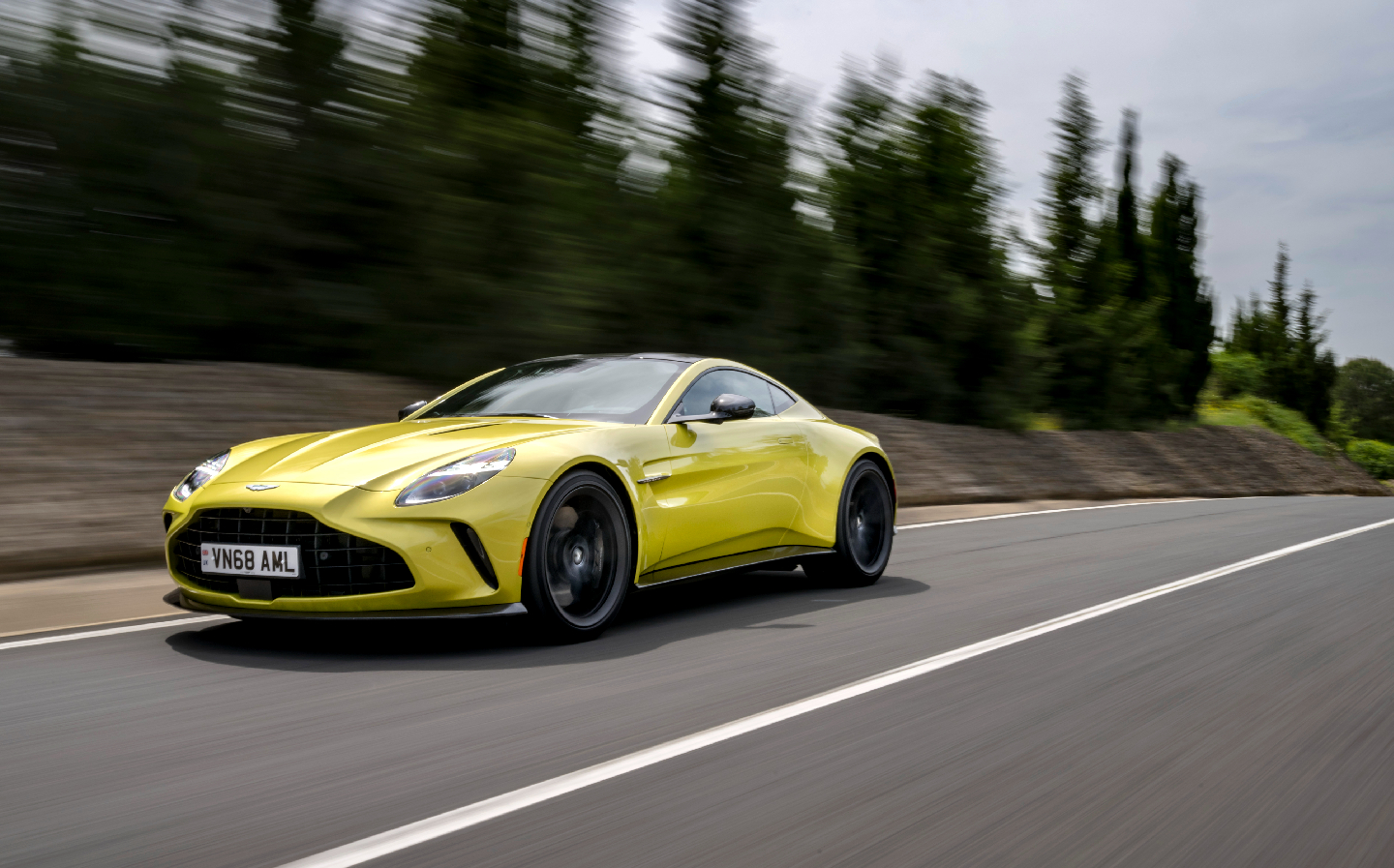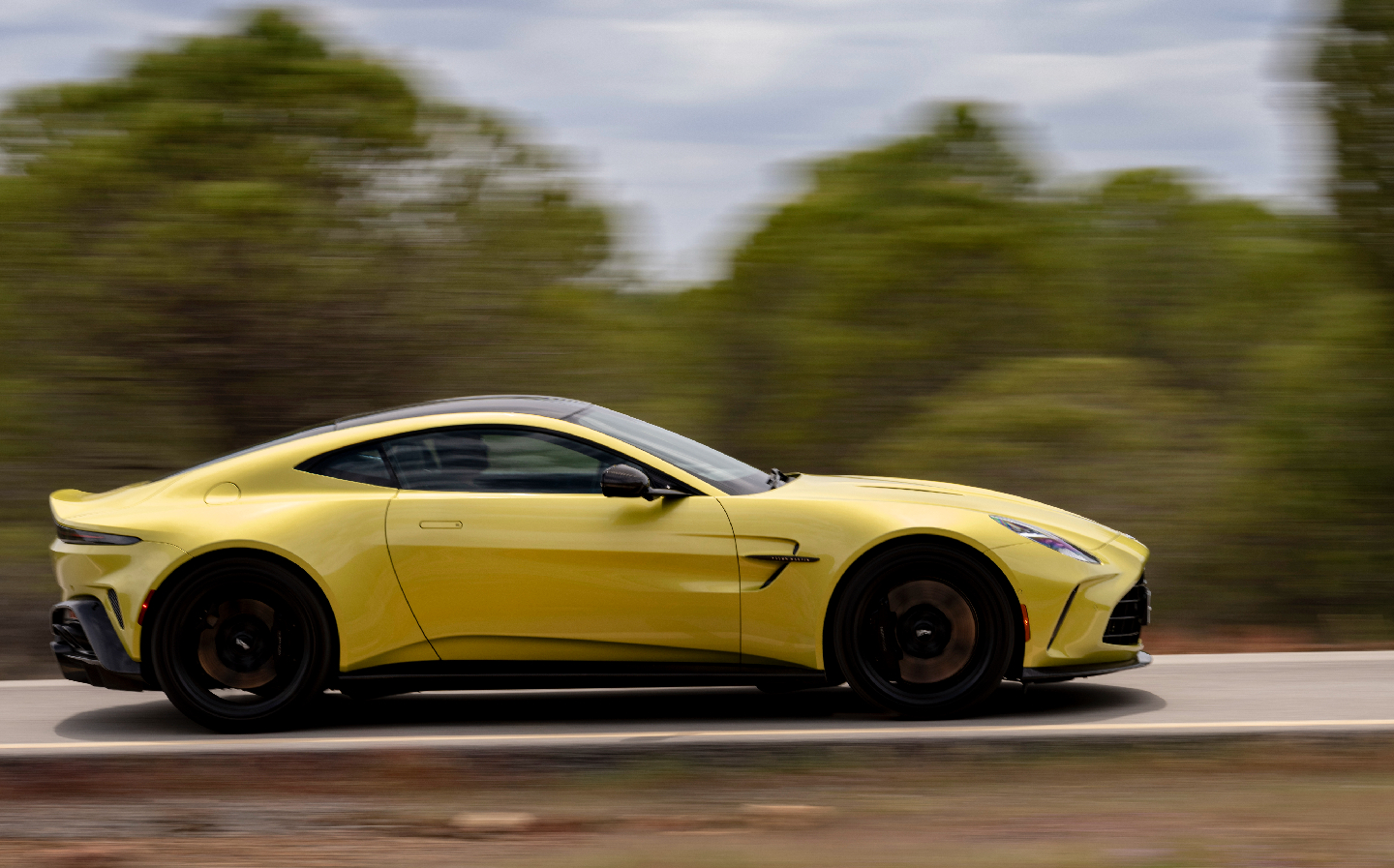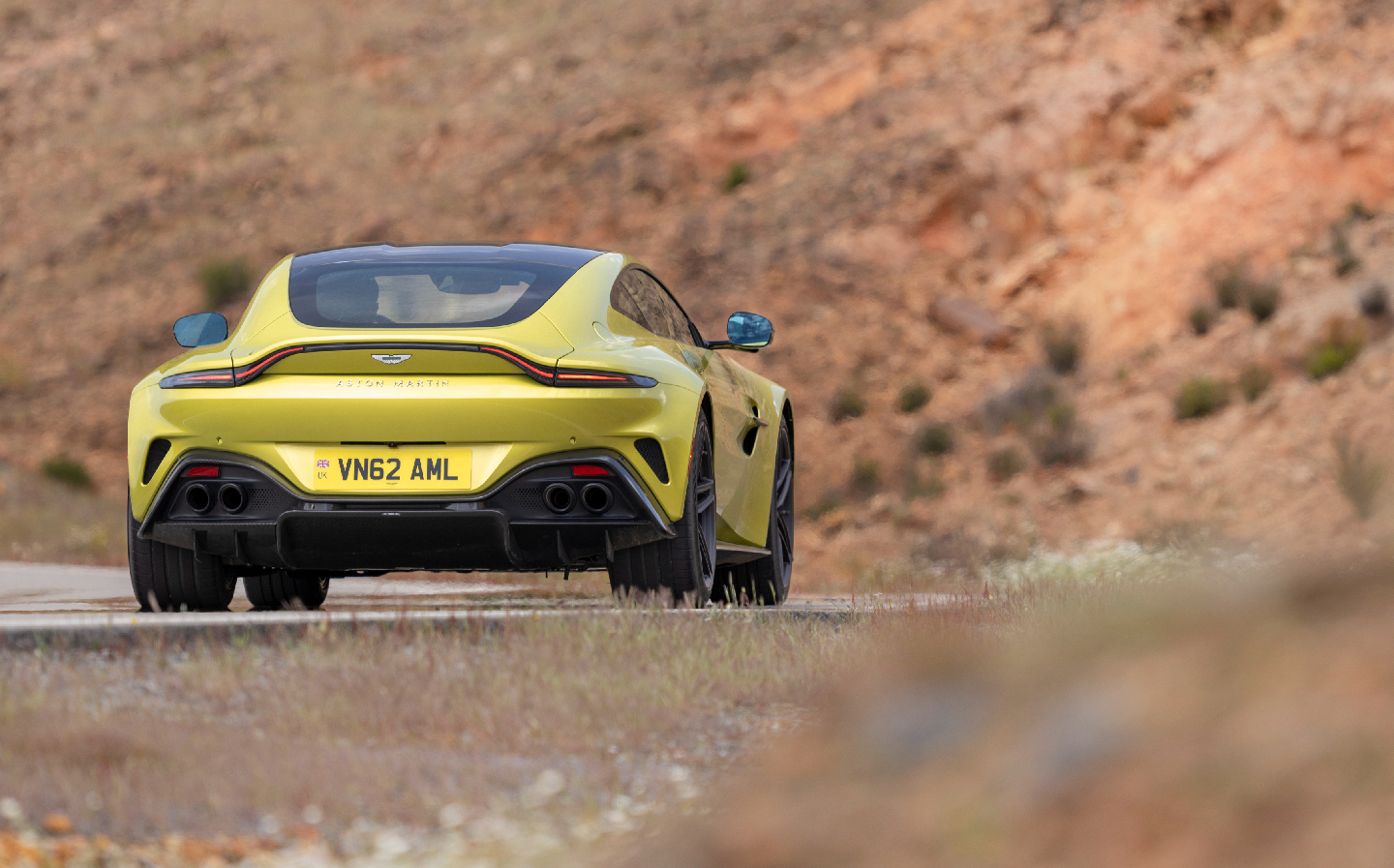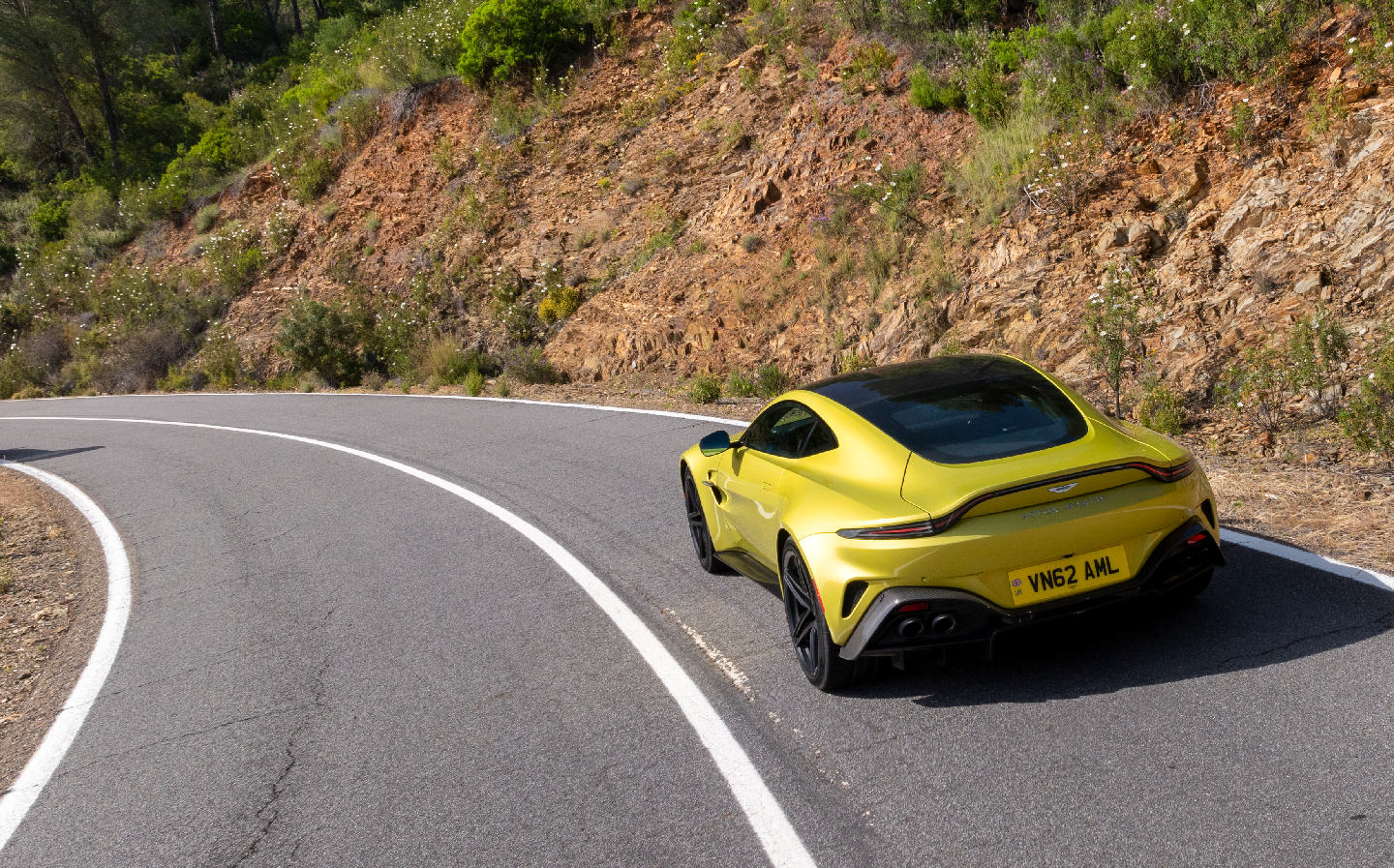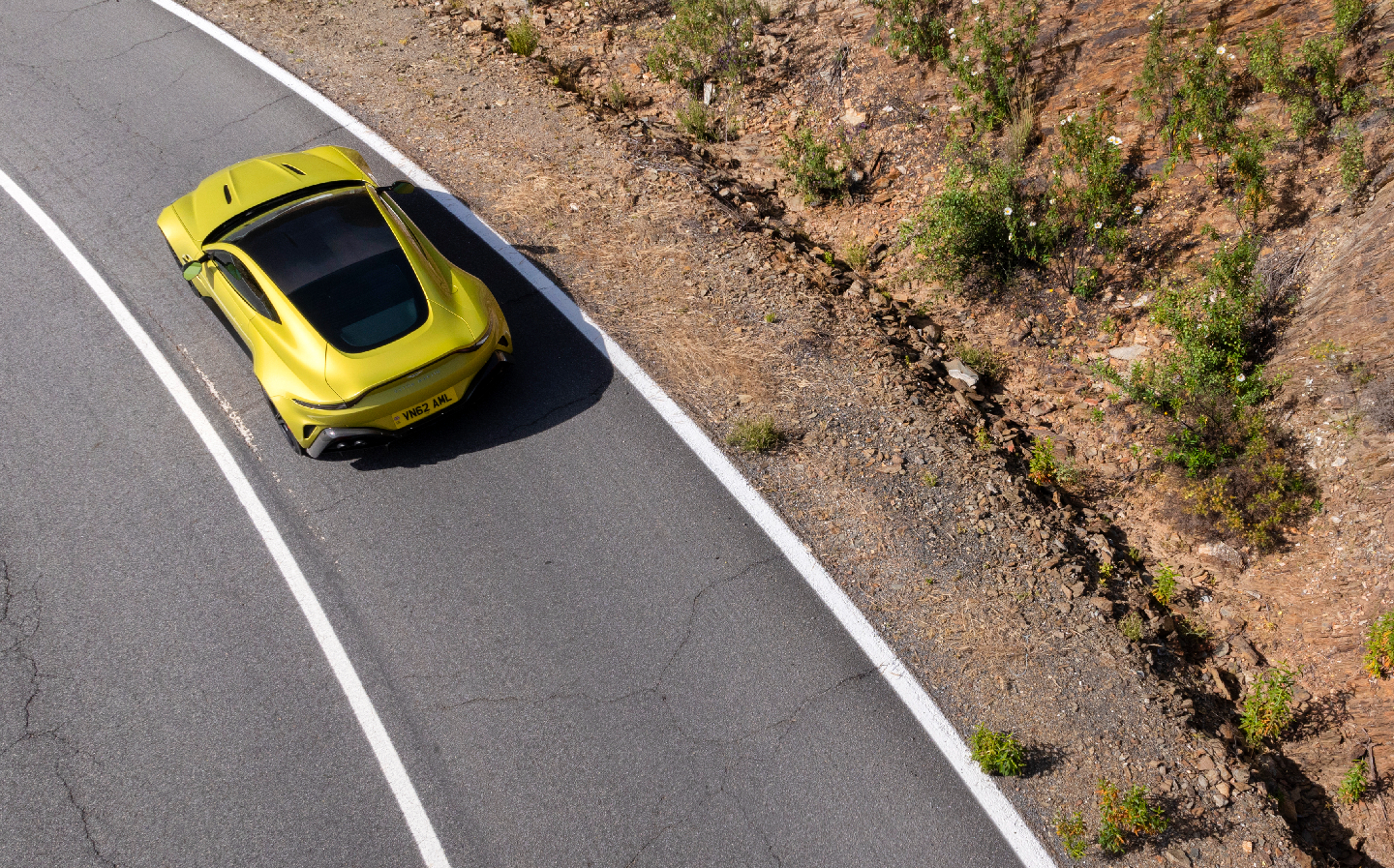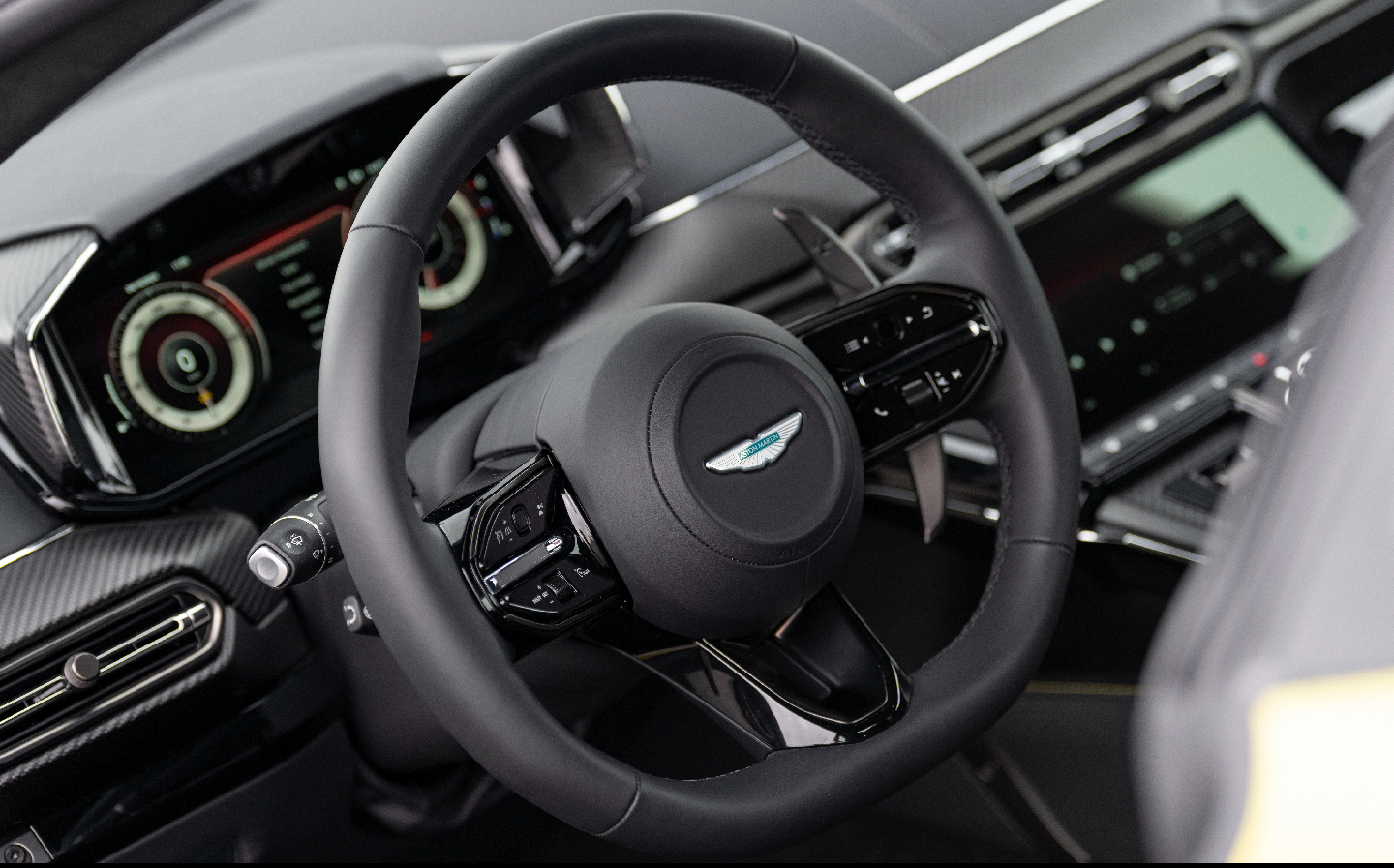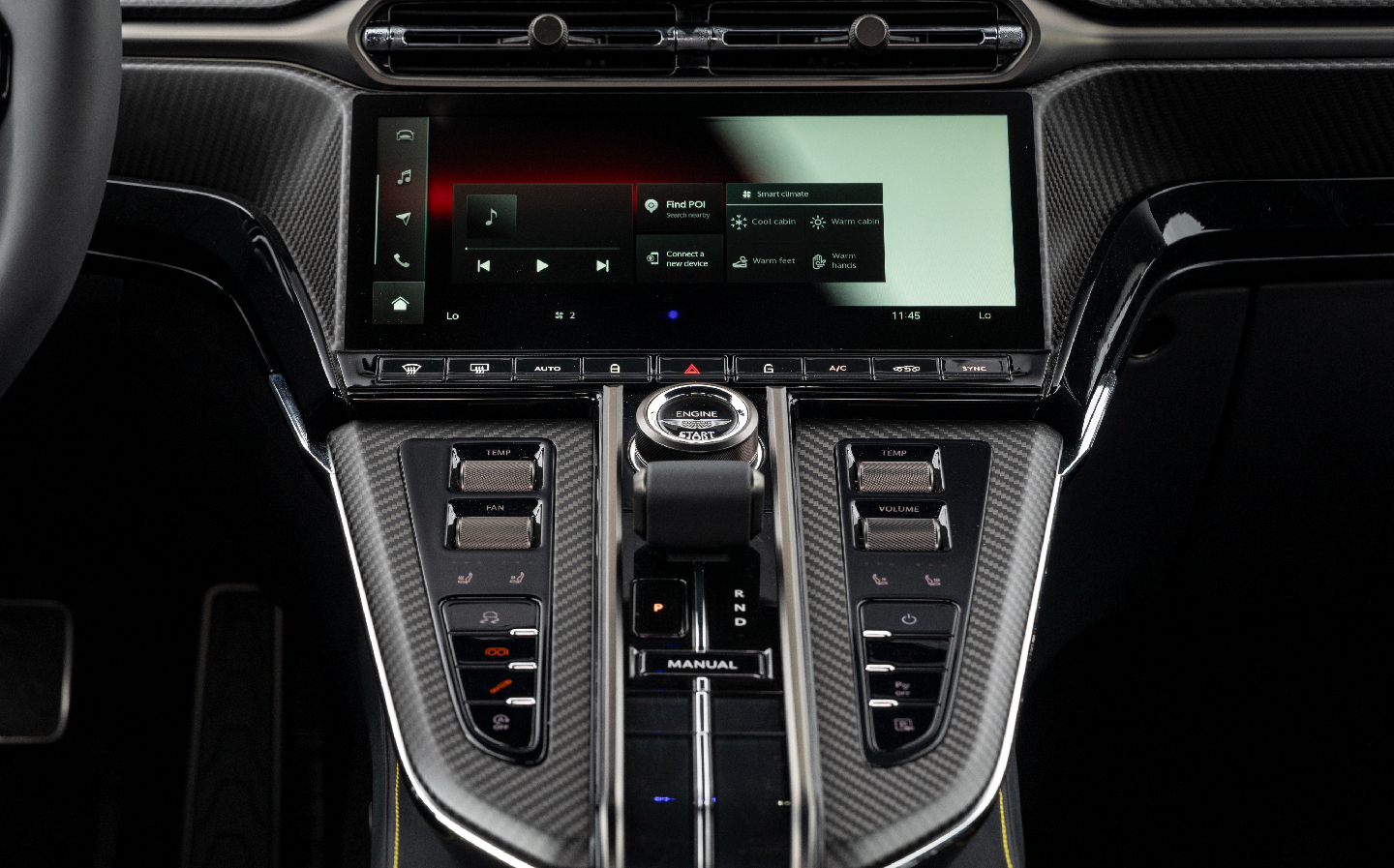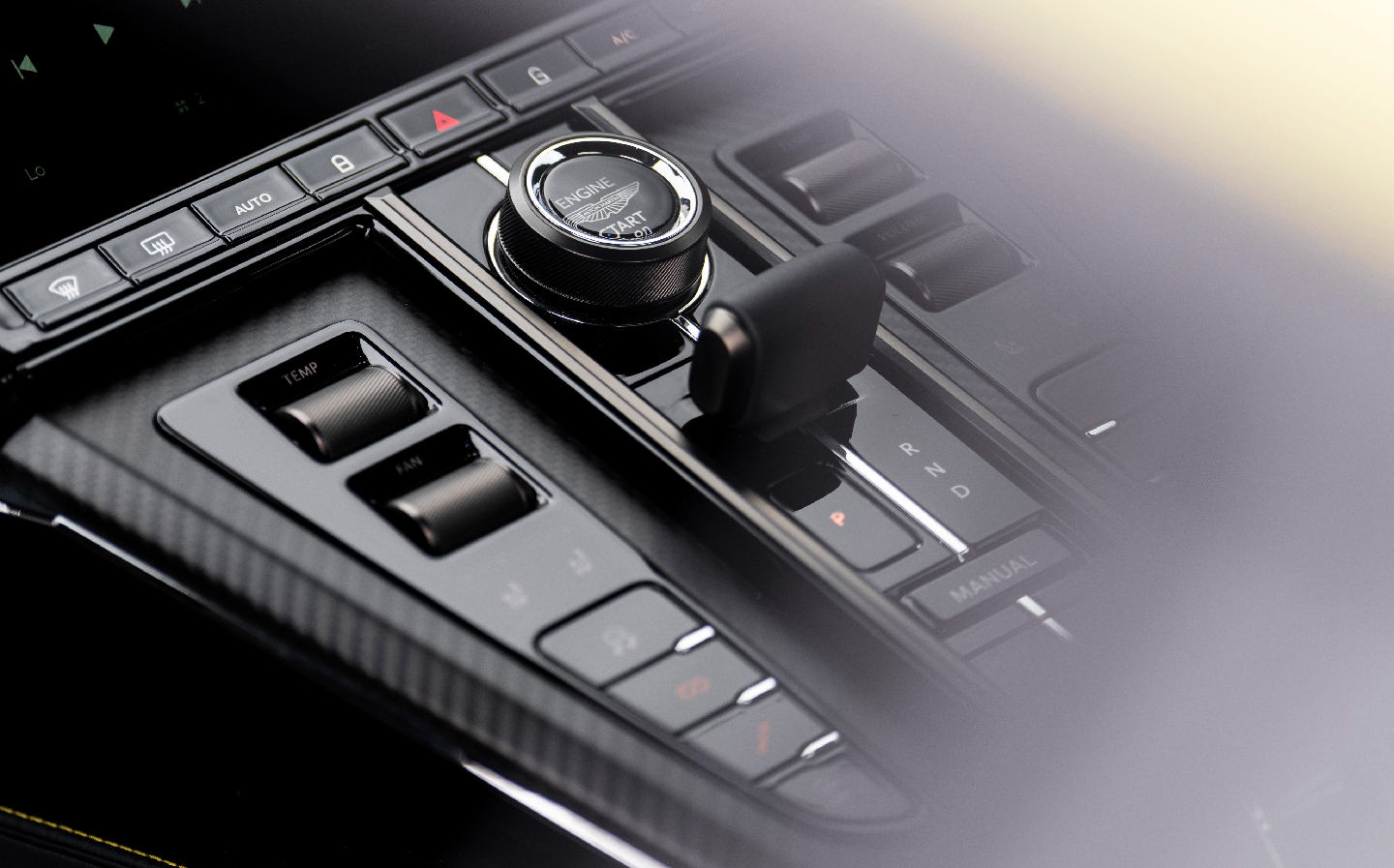Aston Martin Vantage review 2024: Making a bang (and a crash or two) at the sharp end of the sports car market
Not for the faint-hearted
The media launch of the new Aston Martin Vantage was an expensive one for the British marque — more so than usual — because not all of the cars made it back to the Gaydon headquarters in one piece. Two cars were smashed up before I landed in Spain, and then another hit a wall at the Circuito Monteblanco, near Seville, while I was on track. I didn’t see the crash ahead of me but was first to pass the stricken sports car, and its nose was more broken than Owen Wilson’s.
How many cars escaped unscathed from the seven-week global media event we may never know, but it was an unusually high rate of attrition. Which got me thinking: what is it about Aston Martin’s new sports car that meant so many drivers ended up giving their car an amateur, Armco-based redesign?
It comes down to a number of factors, probably. The first is Aston’s chosen marketing slogan: “Engineered for real drivers”. It most definitely tells you what you need to know about this car, and what sort of person they expect to get behind the wheel. Some folk on the press drives perhaps felt they had something to prove, others simply ran out of talent, as Martin Brundle might say.
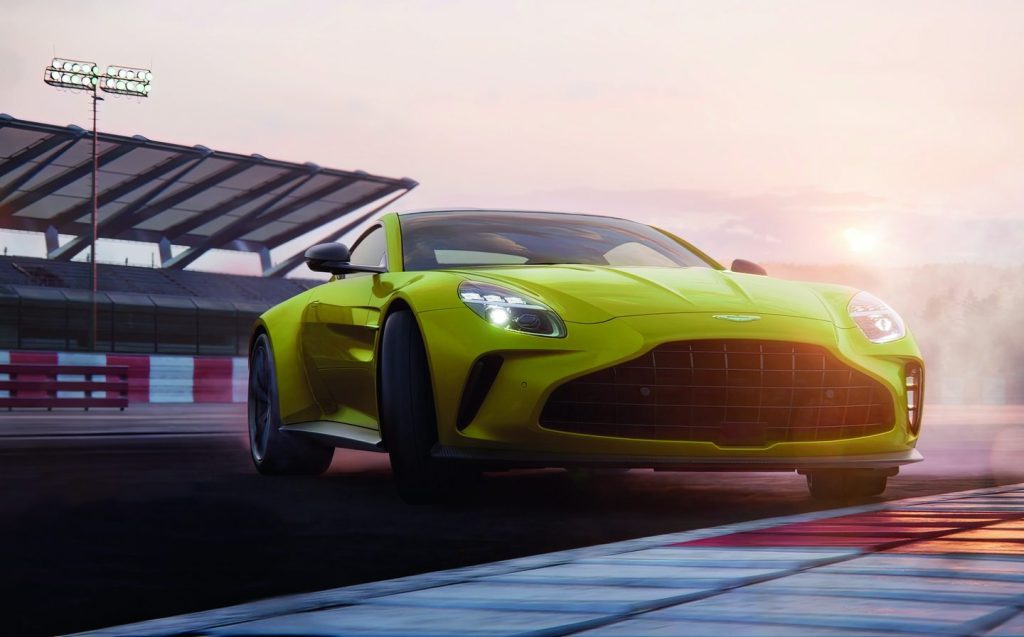
Another important factor is that the new Vantage very much has a wild side, and the potential to bite you hard if you don’t show it the proper respect. In other words, that marketing line isn’t a bluff: this really is a car for people who know what they’re doing behind the wheel.
And that’s probably a good thing. In recent years, Aston has been trailing rivals for on-the-limit panache, but that’s now old news; these days it’s a car brand transformed, upping the ante in two key areas, luxury and performance, so that buyers won’t have their heads turned by the likes of Bentley on one hand or Porsche and McLaren on the other.
Last year I drove the new DB12, and my god that is a good grand tourer: comfortable, powerful, exquisitely put together and, in a first for modern Astons, incorporating an infotainment system that wasn’t a Mercedes cast-off designed chiefly to make drivers want to tear out their remaining grey hairs. Genuinely, the DB12 is a now proper alternative to the beautiful and brawny Bentley Continental GT.
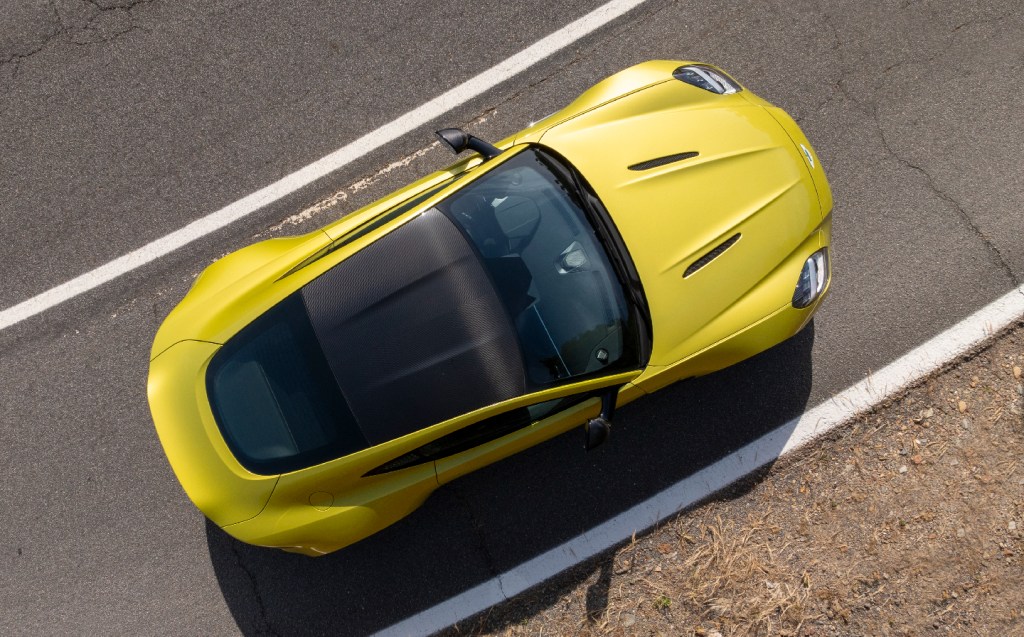
And here is the new Vantage, designed to be that other thing: properly sporty. Aston’s Porsche 911 or McLaren 750S, if you like. To show it means business, Aston Martin has been offering the Vantage in GT4 and GT3 racing flavours, which means that when the Valkyrie hypercar races in the World Endurance Championship next year, models from Gaydon will be fighting for wins in three tiers of sports car racing, and outright victory at both Le Mans and F1. It’s a company not messing about.
The Vantage has been created very much in that spirit. Aston’s product chief Alex Long described the DB12 as the sort of car that helps slow down time, whereas the Vantage speeds things up; it’s a car that’s meant to bring a certain intensity to the driving experience. Job done, I’d say; driving probably doesn’t get more intense than when you’re heading directly towards a barrier at 150mph.
But while the dynamic natures of the two cars are very different, it’s difficult to tell them apart when looking at the cabins (ignoring the fact that the DB12 has a couple of extra seast in the back). In fact, put images of the dashboards side by side and it makes for an excellent spot the difference competition. Both share the same steering wheel, large digital drivers’ display, centre console buttons and 10.25in central touchscreen. Even use of leather on the dashboards and air vents look very similar.
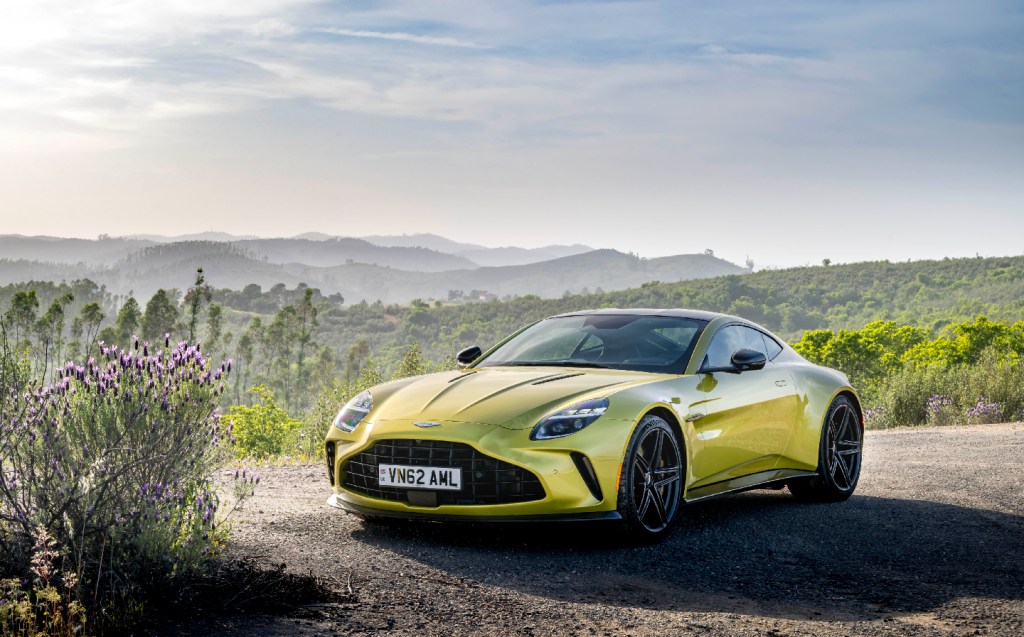
That’s no bad thing, as Aston has dramatically improved its cabins over the last 12 months, and both cars are places in which you will want to spend time. The technology is greatly improved, with an actual touchscreen (Mercedes “dumb” display cast-offs are thankfully a thing of the past) that I had running Google Maps on Apple CarPlay, but Aston has had the good sense to retain some lovely-feeling physical controls, including roller-style dials for climate control temperature and fan speed.
The main differences are that in the Vantage you sit with your backside almost scraping the asphalt, and feel that bit more cocooned. And, as mentioned, unlike the DB12, this is strictly a two-seater.
Good seats they are, too: expertly-crafted, supportive and comfortable, even for stupidly tall drivers such as myself (6ft 5in), with heating and ventilation (cooling) — which, bizarrely, you can activate at the same time. There’s plenty of headroom, too — something Lamborghini is only just beginning to realise is important in a sports car, especially if drivers are likely to don a helmet for “track work”.
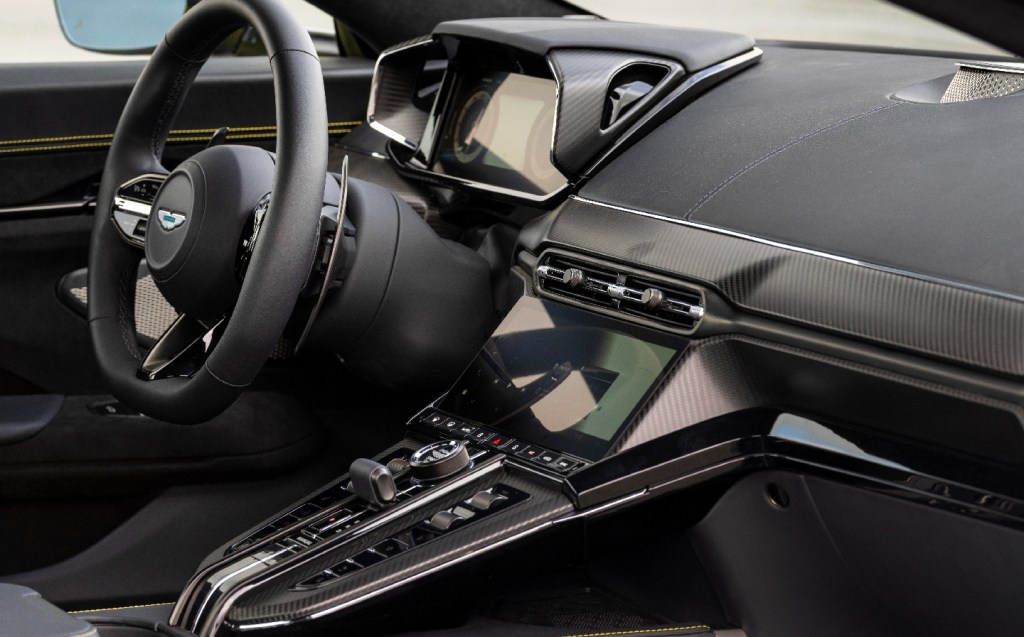
If there’s a complaint here it’s that, while the steering wheel adjustment and positioning is spot on, the pedals feel a little too close and the floor-hinged accelerator sits almost bolt upright, which means your right foot can be in an awkwardly vertical position much of the time. The touch-sensitive steering wheel controls are a little confusing, too.
But after two hours on the road, I climbed out of the Vantage feeling relatively fresh and without my body wishing to lodge a protest for cruel treatment.
And that’s despite the ride quality and the noise from the tyres on rough surfaces being pretty brutal. New Bilstein dampers are designed to allow for a pliant “primary ride” while also dealing with extreme loads — such as on track — but they’re very much tuned towards the performance end of the shock absorber spectrum. New suspension bushes have been introduced to further increase the car’s connection to the road.
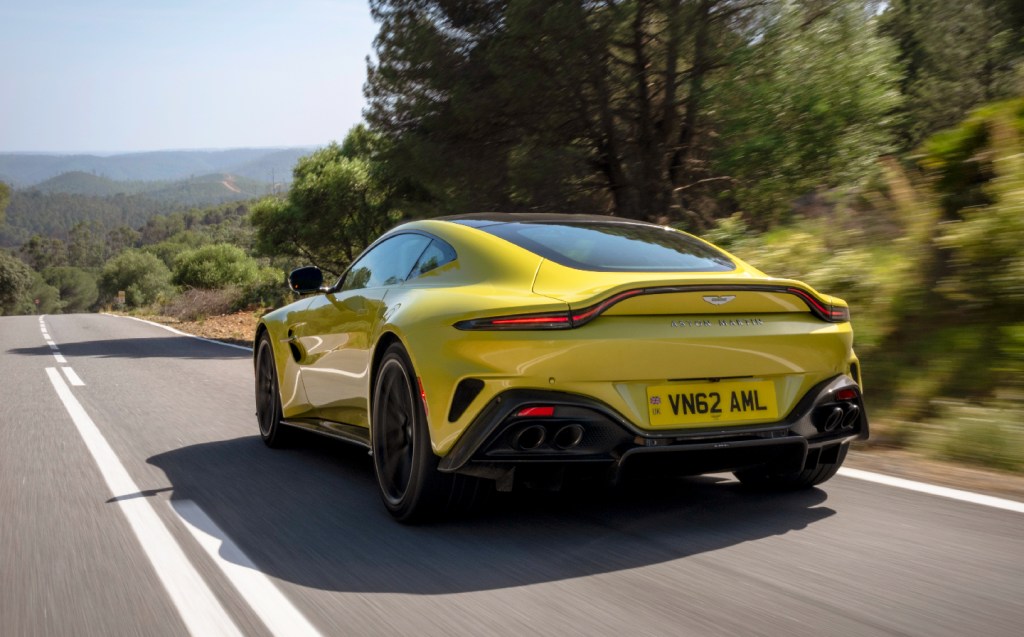
The Vantage is absolutely fine on a smooth surface, to be fair, but a section of rough road rattled the teeth and revealed there to be quite a din in the cabin. “We wanted to get it to the point where you can feel what’s happening on the road surface,” Aston’s chassis chief told us. That’s a tick, then.
One wonders what it’s going to be like in the UK, where roads are often more pockmarked than a teenager’s face. Speed humps proved mostly traversable but the more extreme ones are going to be a problem, particularly as there’s no nose lift, which is standard kit on a McLaren or Lambo.
In dynamic terms, the Vantage is noticeably different in character to the DB12. It’s louder, the suspension is firmer (stiffer even than the old Vantage, by 8 per cent at the front and 13 per cent at the rear), there’s a more noticeable roar from the tyres and it feels a bit more taut in a way that most definitely focuses the mind.
It also picks up speed without breaking a sweat, of course; the Vantage is almost electric car-like in its torque (twisting force) delivery. There’s a lovely growl from the Aston’s 4-litre twin turbo V8 – taken again from AMG, and shared with the DB12, but retuned specifically for Vantage.
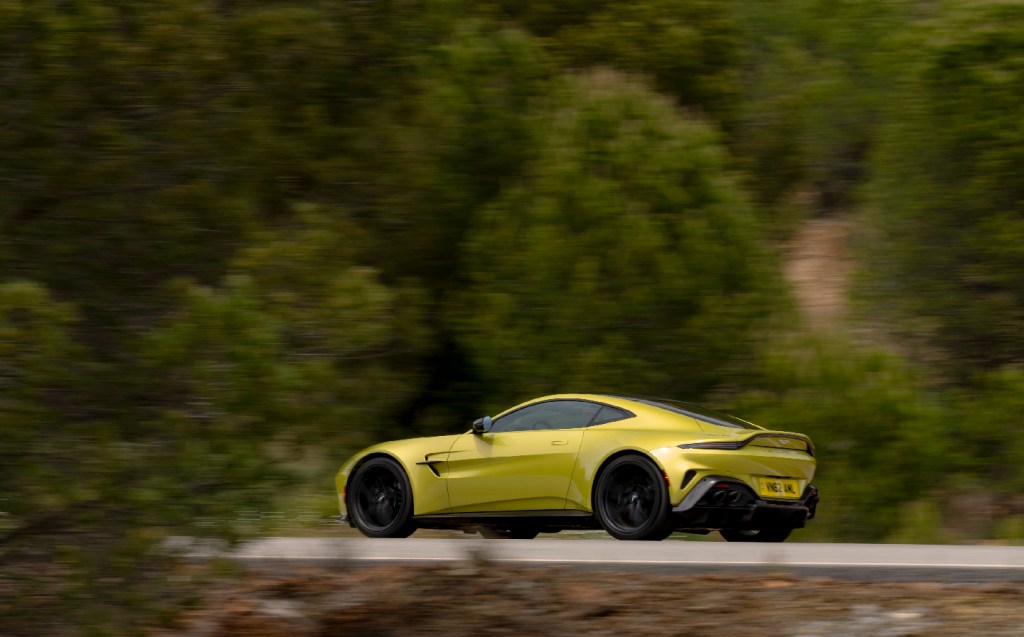
Aston wanted to make a statement with the headline figures of 656bhp and 590 lb ft of torque: that’s up a significant 156bhp, and 15 per cent in both areas, on the old Vantage. But what’s really apparent, whether on track or road, is the responsiveness at all revs and speeds. Officially, the new Vantage can manage 0-60mph in 3.4sec, putting it neatly between a regular Porsche 911 Carrera and the newly-hybridised Carrera GTS, and will continue on to a top speed of 202mph.
But numbers are one thing; putting your foot down and giving it the full beans is another. Before you’ve had time to finish shouting, “Bloody hell,” you’ve hit 70mph, where it will cruise happily in the top (8th) gear of the ZF transmission at barely more than tickover. So before going anywhere near the track, I was fully aware of the Vantage’s awesome potential.
The steering wheel is thick and purposeful, and turning it results in sharp changes of direction, even around the centre position and, combined with the compact wheelbase (the distance between the front and rear axles), extra width (15mm at the wheels and 30mm overall), increased torsional stiffness in the chassis (by bracing the suspension elements together) and a new rear electronic differential, to distribute the torque to each wheel, the result is a noticeably darty front end. The Michelin Pilot Sport S5s grip hard without a whiff of understeer. The Vantage is really at home on tight twisty roads but on fast flowing stuff it’s glorious, too.
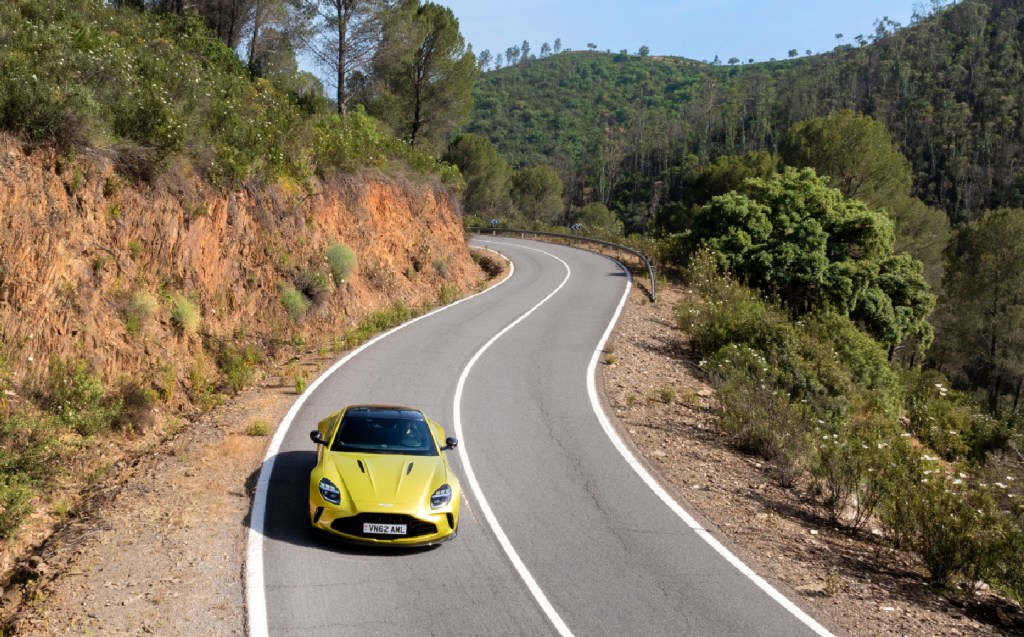
Gearshifts are quick, as you’d expect, though Aston’s engineering chief told us the ZF ‘box was chosen because it balances immediacy and smoothness with character. What that means in practice is that, while you can cruise around town in the Vantage in automatic, it’s a car that is not at home doing so; sedate drives aren’t its thing.
And unlike the DB12, in which you can enjoy simply bumbling around the world’s most glamorous rivieras, the Vantage feels like its champing at the bit when you’re sticking to the speed limits. It’s a car that encourages you to push through the limits of legality and before you know it, you’ll be standing by the side of the road explaining to the boys in blue that it really wasn’t your fault, it was the car. In fact, a couple of writers (not from the UK) spent the night in police cells, according to the rumour mill.
That why the new Vantage needs to be experienced on track. You have to treat it with kid gloves at first, and work your way through the various drive modes, up to ESP off, at which point you can dial in the amount of traction control at the rear on a scale from 1 to 9, with the latter being completely off. Overconfidence is punished — quite clearly, judging by the rate of attrition on the launch — but it’s possible to find a rhythm and drive it hard, lap after lap.

Extra cooling ducts over the old Vantage help keep the car within nominal operating temperatures for longer, and you can specify carbon brakes to replace the steel units, meaning they’re more suited to extreme use, too. When fitted they get specific boosters to increase the load and improve the pedal feel.
Get too cocky too early, though, and things can go pear-shaped quickly. The increased stiffness of the chassis and improved grip mean that once the Vantage lets go, it lets go hard and you need racing driver reactions to catch it. Aston has dialled down the rear roll bar a bit to reduce the chances of an inside wheel being cocked, aiding mid-corner grip, but that doesn’t result in much extra warning before the rear lets go.
All of which means this is not a sports car for the faint-hearted. But if you know what you’re doing, the new Aston Martin Vantage is a truly remarkable bit of kit and one that can now easily hold its head up — dynamically speaking — against rivals from brands that Aston once couldn’t reach.
Related articles
- If you enjoyed Will Dron’s review of the 2024 Aston Martin Vantage, you might like to read what he had to say about the DB12.
- Also check out the Aston Martin Valiant, a 734bhp track-focused sports car developed for Fernando Alonso
- And don’t miss this video of the Aston Martin Valkyrie AMR-LMH hypercar on track ahead of Le Mans 2025
Latest articles
- Porsche 911 Carrera S 2025 review: Harder, better and faster – but is it the best 911?
- F1 2025 calendar and race reports: The new Formula One season as it happens
- Seven great automotive events to visit this summer, from F1 to art and champagne
- Watch new Porsche 911 GT3 smash Nürburgring record for manual cars
- Skoda Elroq 2025 review: Czech carmaker can’t seem to miss with its electric family cars
- Five best electric cars to buy in 2025
- Should I buy a diesel car in 2025?
- Zeekr 7X AWD 2025 review: A fast, spacious and high tech premium SUV — but someone call the chassis chief
- Denza Z9GT 2025 review: Flawed but sleek 1,062bhp shooting brake from BYD’s luxury arm


